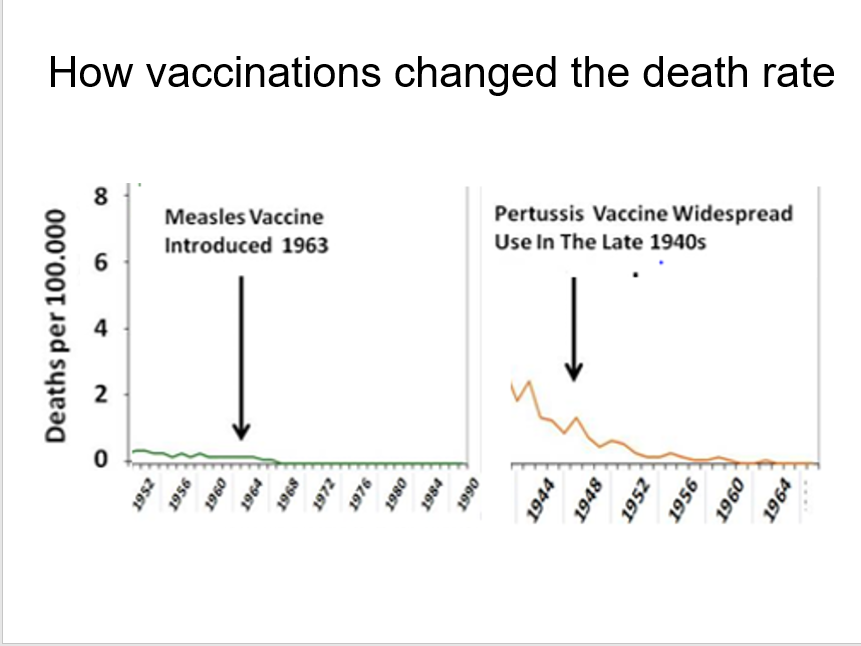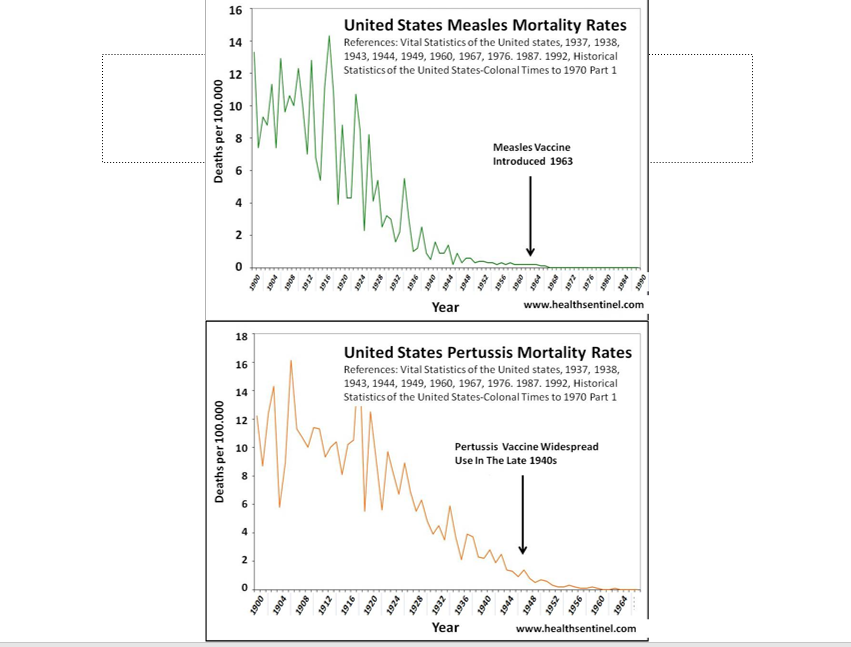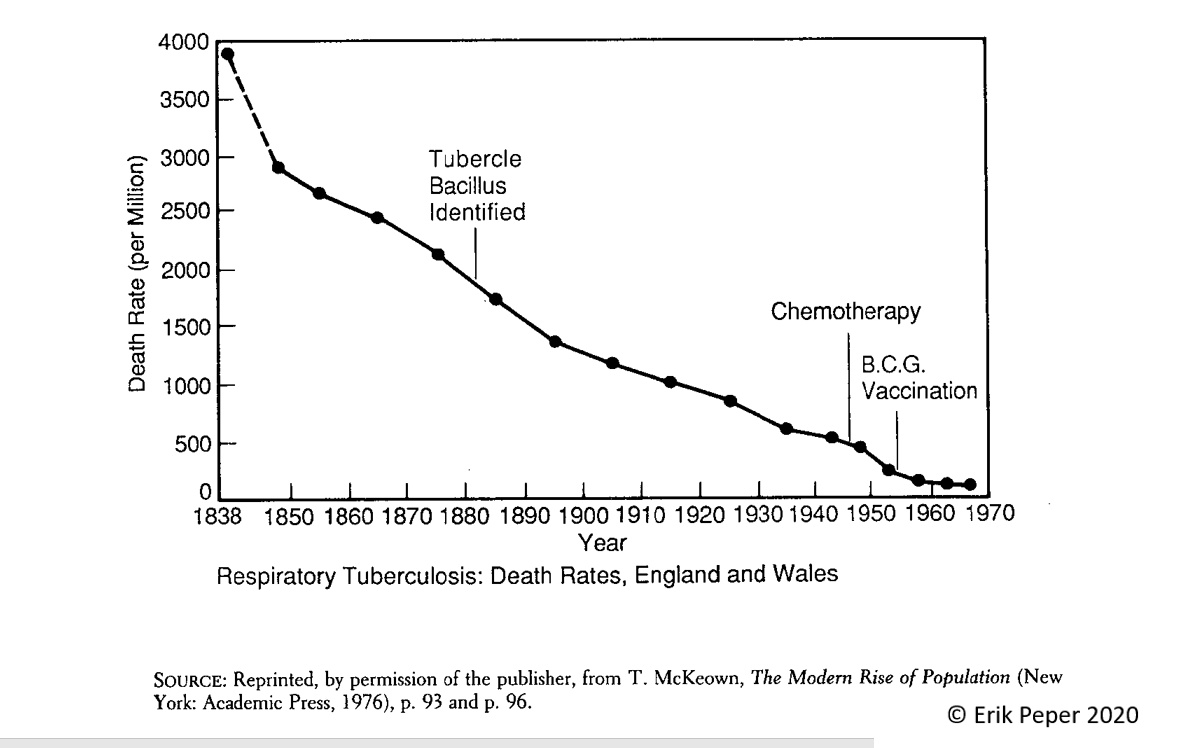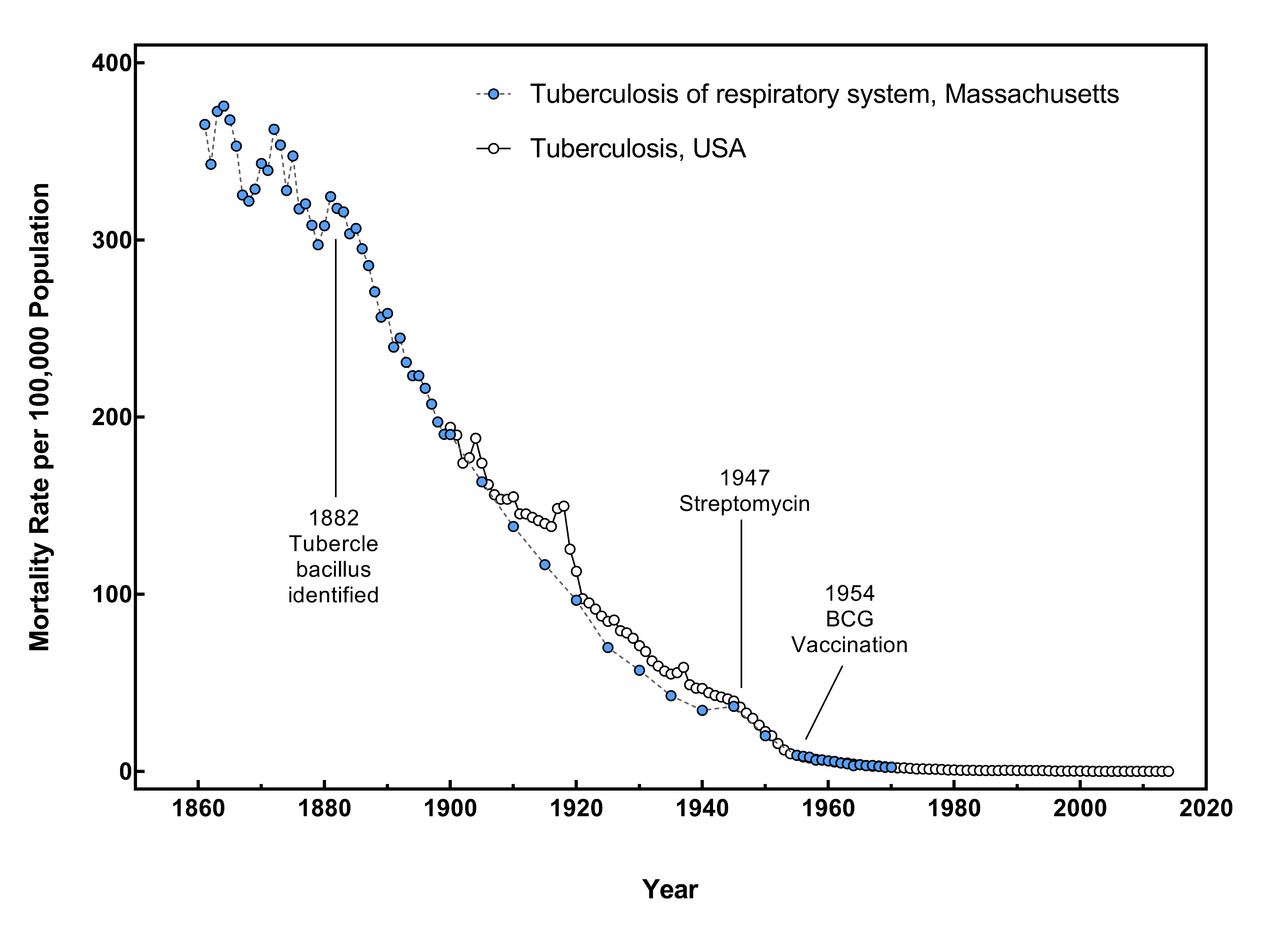The effects of Vaccinations in the General Population on Death Rates
by
Robert Gorter, MD, and Erik Peper, PhD.
May 11th, 2021
Currently, we are living during a pandemic with conflicting information and confusing (contradictory) political and public health decisions but which led to believe that strict lockdowns, mandatory testing, and vaccinations would be the only way out: at any costs.
Like in measles, essentially all children got infected and the death toll was close to zero before the vaccinations started.
To make their point, drug companies showed the data over the previous few decades and thus seemingly showing the impact vaccinations truly had. (Figure 1).

Figure 1
However, if one looks at the data over a century, one can see that there was a persistent and consistent decline and when introduced, immunizations did not have much of an effect on the death rate
When became vaccinations a tool in public healthcare and well-being?
We have collected a few data from official USA governmental archives and this is what we want to share with you.
We are taught to believe that mass vaccinations brought an end to many diseases; especially childhood diseases and tuberculosis.
We do believe that vaccinations play a role in overcoming and preventing infectious diseases like tetany and Hepatitis B (HBV).
But when we look at childhood diseases like measles, mumps, pertussis, or tuberculosis, we can observe an interesting phenomenon (figure 2):
As an example, death rates per 100,000 dropped for measles and pertussis successively over the previous decades with an exception during World Wars I and II.

Figure 2
These data in figure 1 show that the death rates for measles and pertussis where on the decline already since 1900. The same holds true for several more childhood diseases, including chickenpox, mumps, and rubella (not shown here).
Thus, one could document that over the last century the death toll of all childhood diseases (caused by viruses) and several diseases (caused by bacteria-like tuberculosis) were insignificant decline before vaccination was started anyway.
When we look at death rates for lung tuberculosis, the same trend is there: since the 1850s, persistently, the death rate declined and when antibiotics (in the graph called chemotherapy) were broadly available (ca. 1948) and then the BCG vaccination against tuberculosis was introduced in 1953, there was not much of an effect anyway (figure 3a).

Figure 3a
The pharmaceutical companies claim that the decline of death rates in many infectious diseases went down because of the development of multiple vaccines do not seem to be confirmed by data (Figure 3b)

Figure 3b
(Merged mortality rates of ‘tuberculosis of respiratory system’ in Massachusetts 1861–1970, and ‘tuberculosis’ USA 1900–2014 (Data collected from reports of the US Census Bureau and CDC-Wonder / the US Center for Disease Control (CDC); AMC-University of Amsterdam, 2016)
If one is not vaccinated for common childhood diseases (measles, chickenpox, mumps, rubella) one will experience the actual illness as a child.
The actual illness (measles, chickenpox, mumps, rubella) will mature your immune system by raising the core body temperature (fever) and skin eruptions. We now know that in those skin eruptions (erythemas) dendritic cells undergo a maturing process. Dendritic cells are very important cells that recognize anything “wrong” that comes from outside (pathogens) and from inside (cancer cells). There is lots of adats that when one had not the opportunity to have one’s dendritic cells mature in this way, the risk to develop allergies and cancer more often and cancer at an earlier age.
As a child, when parents provided Tylenol (Paracetamol) to make the child more comfortable after vaccination or during the actual illness, the immune system has less the opportunity to learn to develop a regular immune response.
By going through a childhood disease, one develops life-long immunity which is not always the case after immunization for childhood disease. Getting a childhood disease at an adult age bears much more risk to develop the significant disease. Therefore, when a child has been vaccinated but to assure immunity at adult age, a booster is often recommended by another jab as immunizations do not guarantee life-long immunity.
Were vaccinations the main cause of the decline of death rates?
The only way to answer that question is to do a controlled study. Or, follow death rates over long periods of time and have that period before starting the vaccination as a “historic control.”
We did the second option as there will never be an opportunity to conduct a controlled study.
Conclusion:
The introduction of vaccinations against childhood diseases and other infectious illnesses does not seem the have had a significant effect on the further decline of death rates in these populations.